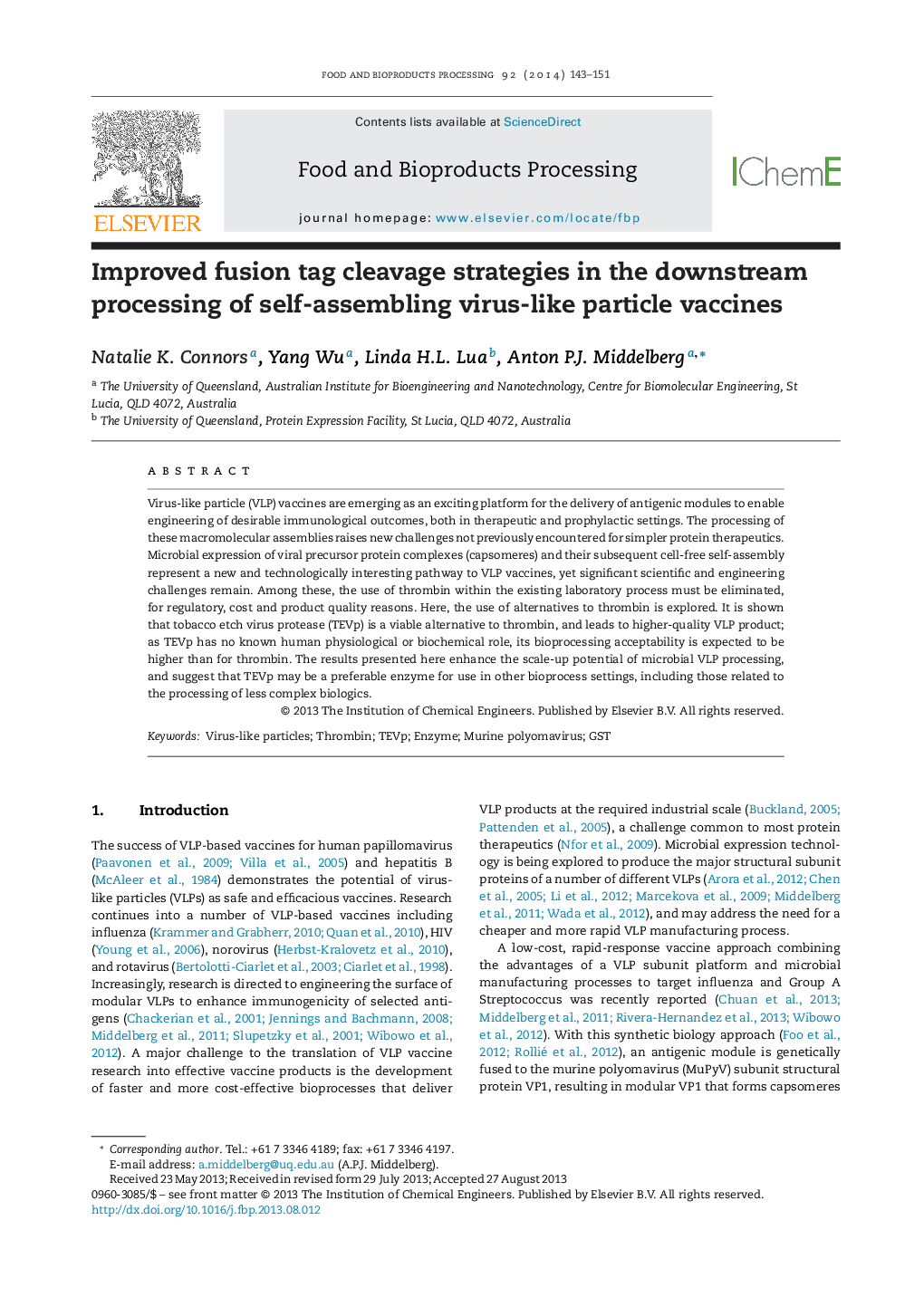| Article ID | Journal | Published Year | Pages | File Type |
|---|---|---|---|---|
| 18986 | Food and Bioproducts Processing | 2014 | 9 Pages |
•VP1 protein able to self-assemble into VLPs was expressed as a GST-fusion.•Processing requires enzyme cleavage of GST from VP1, usually using thrombin.•Thrombin use leads to regulatory concerns, higher cost, and non-specific cleavage.•Alternative enzymes (enterokinase and tobacco etch virus protease (TEVp)) studied.•TEVp is the best with less regulatory concern, low cost, and high cleavage specificity.
Virus-like particle (VLP) vaccines are emerging as an exciting platform for the delivery of antigenic modules to enable engineering of desirable immunological outcomes, both in therapeutic and prophylactic settings. The processing of these macromolecular assemblies raises new challenges not previously encountered for simpler protein therapeutics. Microbial expression of viral precursor protein complexes (capsomeres) and their subsequent cell-free self-assembly represent a new and technologically interesting pathway to VLP vaccines, yet significant scientific and engineering challenges remain. Among these, the use of thrombin within the existing laboratory process must be eliminated, for regulatory, cost and product quality reasons. Here, the use of alternatives to thrombin is explored. It is shown that tobacco etch virus protease (TEVp) is a viable alternative to thrombin, and leads to higher-quality VLP product; as TEVp has no known human physiological or biochemical role, its bioprocessing acceptability is expected to be higher than for thrombin. The results presented here enhance the scale-up potential of microbial VLP processing, and suggest that TEVp may be a preferable enzyme for use in other bioprocess settings, including those related to the processing of less complex biologics.
